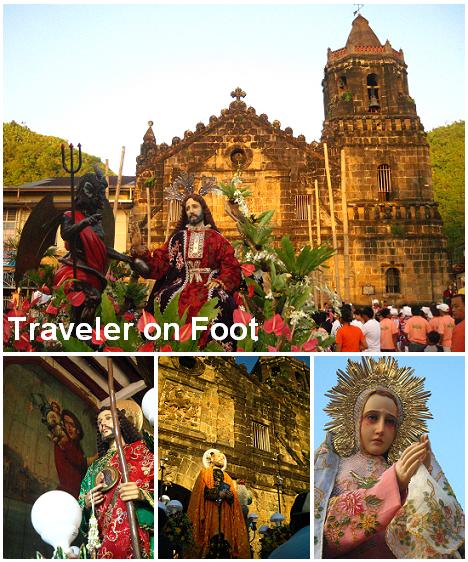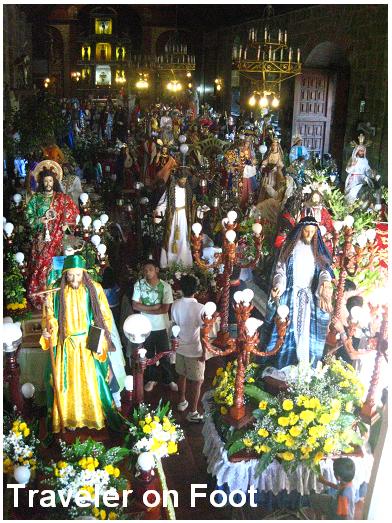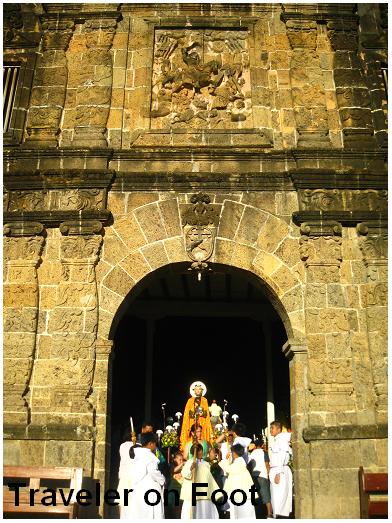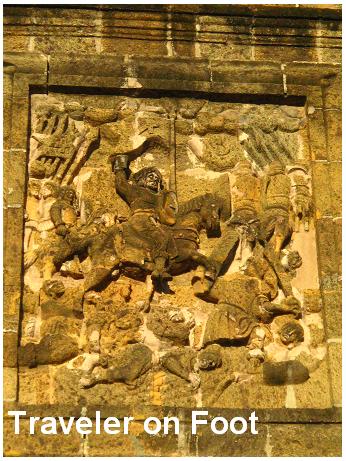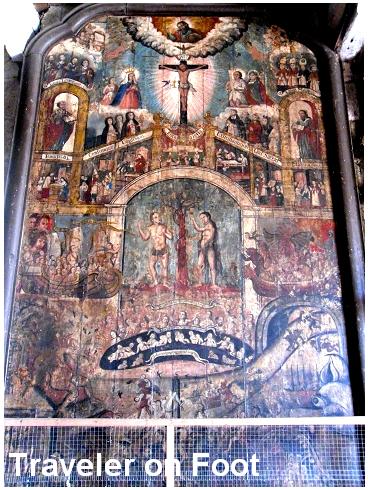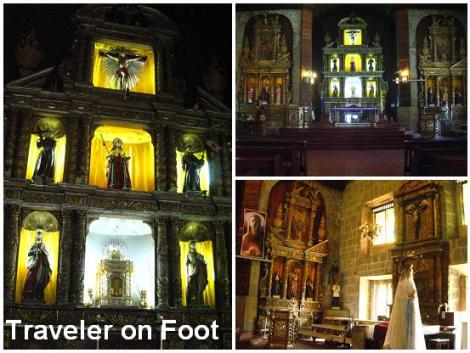PAETE IS FOREVER. The ancient Greek philosopher, Heraclitus once said that a man can never step into the same river twice. It may be the same river but the water that flows into it is eternally changing. The same goes with the traveler who could have been in the same destination countless of times but will not see the place the same as it was before.
This is the case of Paete in the province Laguna. I’ve been to this lakeshore town several times since 2008. But no matter how many times I’ve been there to either buy woodcarvings and native handicrafts, reconnect with friends who I incidentally met in my trips to this town, or simply finding the nearest escape from city life, Paete forever presents itself with new discoveries. This narrative is a weaving of selected memories about my visits to my favorite town in Laguna.
A SCENIC ROUTE. There are two ways to reach Paete from Metro Manila. One can take a bus bound to Santa Cruz, Laguna in a terminal in Cubao and then take a jeepney going to Siniloan. Pass beneath the stone lions of the Pagsanjan Arch and cross the placid Lumban River. Upon reaching the boundary of the sleepy Kalayaan town, ask the driver to make a stop in Paete poblacion. Another way is through the Manila East Road. I personally prefer this longer drive because it offers a more attractive view than taking SLEX. This scenic route passes through the rustic, laid-back towns and the winding mountain roads of Rizal Province with overlooking vistas of the metropolis and Laguna de Bay. When reaching Tanay at lunch time, we would have bulalo at Rambull’s and make a quick stop along the road to see the Pililia wind turbines.
We knew that we reached the boundary of the provinces of Rizal and Laguna when the repetitive views of the forest and slopping mountainside are broken by makeshift stalls along the roadside filled with merchandise that can furnish an entire house with native baskets, mats, hammocks and all kinds of woven furniture made from pandan, rattan and bamboo.
LAGUNA DE BAY. Back at sea level from the sloping road of Mabitac, the drive passes through the rice fields of Siniloan, Pangil, Pakil and reaches Paete in less than an hour. Paete is one the towns in Laguna that sits along the lakeshore. Looking at Paete from the air, it is a narrow piece of land that is sandwiched between the foothills of the Sierra Madre and the vast Laguna de Bay.
Laguna de Bay is the largest lake in the country. Its age and formation can be traced to an ancient volcano that exploded a million years ago leaving a depression in the middle lobe of the heart-shape body of water called the Laguna Caldera. In the olden days, Yangco Steamships ferried passengers and goods from Manila to Laguna via the Pasig River and Laguna de Bay water highways. Silting in the lake made this means of transportation impossible today. Compared to it’s nearby cousin, Taal Lake in Batangas, Laguna de Bay is very shallow that when bottom sediments are agitated, it turns the water muddy. In Paete, the locals refer the lake as dagat that provides livelihood to fisher folks and as source of inspiration to its homegrown craftsmen and artists.
LAND OF THE BUEN EBANISTAS. The founding of Paete as a pueblo dates back in 1580 when Spanish conquistador Juan de Salcedo explored the communities along the eastern shore of Laguna de Bay. Franciscan friars soon followed Salcedo to establish a Catholic mission. They found the locals to be buen ebanistas or good cabinetmakers and carvers.
Paete Church is the best testimony of the masterful craftsmanship of the ancient buen ebanistas. Founded by Fray Juan de Placencia, the previous stone church was destroyed three times by natural calamities. The present structure was built in 1884. Sculpted on adobe were flowers, garlands, and curlicues in the church facade. Perched on the church’s topmost triangular pediment is a relief of St. James the Apostle as a warrior mounted on a horse, slaying the enemies. This is familiar image of Saint James as Señor Santiago Matamoros. Old timers claim that this gallant saint was responsible for guarding Paete against the raiders. It is said that he was seen as a Caucasian in a full warrior regalia, striding on a horse while overlooking the town from a hilltop. During World War II, the saint is said to have driven away the Japanese enemy who attempted to follow the townsfolk who run for safety in the nearby mountains while town was being burned.
HERITAGE TREASURES. Inside the church is a gallery of religious art. These religious artifacts, statues and over-sized paintings were used by the friars as visual aids for teaching catechism to the native converts. Paete’s legendary master carver Bartolome Palatino carved the retablos in 1840. Palatino did not use nails. The main and side altars were held together by wooden dowels.
One of the widely venerated icons in the church is the image of the Santo Entierro. During Holy Week, this ancient image of the dead Christ is bathed. The water used in bathing the image is distributed to the townsfolk who believe in its healing powers. After the bathing the image, it is placed in a tent filled with incense. In the ritual called the Pasuob, the sick and the old take turns entering the tent in the belief that inhaling the fragrant smoke can heal different sorts of illnesses. This Holy Week ritual is one of the traditional activities held before Paete’s Grand Holy Week Procession.
JOSE DANS PAINTINGS. Important heritage treasures are the murals by Jose Dans. This Paete-born artist was known for fashioning his brushes out of cat’s fur and for mixing pulverized volcanic ash with pigments for his paintings. In 1645, he painted two large paintings of scenes that seemingly straight out from Dante’s visions of heaven, hell, and purgatory. Both are displayed in Paete Church.
There are also two murals depicting St. Christopher carrying the Child Jesus on his shoulder while crossing a river. This has an interesting story. The one painted directly on the adobe wall depicts the saint as a native in Moorish clothing. It is said that the friars did not like the painting on the church wall so the artist made another version of St. Christopher as a Caucasian in 16th century European fashion. The newer painting was painted on wood. It was placed directly on top of the older painting. Saint Christopher as a Moro was forgotten for centuries until in the 1980s when the one painted on wood was taken down for cleaning.
BAJO DE LA CAMPANA. Fellow blogger and Paete-raised, Tito Basa of Backpacking Philippines introduced me to the adventure of climbing up the church’s bell tower. When the friars established their mission in the country, they organized villages within the hearing distance of the church bells or bajo de la campana.
At the bellfry we met Dan Marion Roque. He explained that the peeling of the five antique church bells with the oldest and largest dating to 1793 and 1849, respectively have become part of the local’s way of life. Generations of sacristans have been trained to know the assigned ringing pattern to announce a nearby fire, a distinctive funeral toll for a male and a female town member, procession of a patron saint, call to mass, call for the Oracion, and the Sanctus during mass.
CHISEL TOWN. Just like the tolling of the church bells, chisel-tapping is a familiar sound in Paete. As a historian once told me, It’s music to the ears. Everything about Paete has to do with the chisel. From the legend about how the town received its name to its church filled with religious statuary and relief panels at every corner, woodcarving is the lifeblood of this town. Inside a busy workshop, we watched the different stages of sculpting. From carving a rough sketch on a block of wood using the v-shaped chisel called the pikos, landay for detailing, hiwas for surfacing and lukob for shaping the eyes. Smooth sanding and applying coats of color and varnish are done in separate spaces.
The flair for the chisel is passed on by mastercarvers to the next generations through osmosis and imitation. The legendary master carver Jose Caancan was a pupil of Jose Rizal who followed him into exile in Dapitan. When he returned to Paete, he put a workshop where he would gather apprentices to demonstrate different methods of sculpting. One of his pupils is Isaac Cagandahan who won the first prize during the first Art Association of the Philippines national competition.
ART PILGRIMAGE. Descendants of Isaac Cagandahan have been making their name in the contemporary art scene. Glenn Cagandahan is known for his folksy sculptures on epoxy. Odette Cagandahan-Monfero wowed audiences of a national talent show for her speed painting performances. Christine Cagandahan makes relief sculptures of tropical flowers using epoxy and mixed media.
Whenever I would spend overnight in Paete, I stay in the Cagandahan residence. In the morning, I would complete my walking tour itinerary around town, including my art pilgrimage to the different artist’s studios and galleries beginning at Dr. Nilo Valdecantos’ Kape Kesada Gallery and then in Hugis at Buhay Paete of production designer Lino Dalay and Mommy Martha. My next stop is in Luis Ac-ac atelier on the same street. In barangay Quinale, I spent long chats with assemblage artist Ben Dailo who used driftwood and wooden beads in his women figurines. A few walks from Ukit Quinale studio is the home of Bayani Acala who at the time of my visits was commissioned to design the trophy for the annual Dutdutan Tattoo Art Competition. On the main highway, I would drop by the home studios of Otep Banez and Casa Rubio of Dominic Rubio and wife Vivian.
TAKA OF PAETE. Of Paete’s folk art, taka making is my next favorite after woodcarving. Those colorful, warm, and whimsical Taka of Paete have become the epitome of Filipino folk art. They are the embodiment of the Filipino fiesta painted on papier-mâché figures of dolls in Filipiniana, roosters, carabaos, and bright-red horses.
Old folks claim that Mexican friars introduced taka-making to the pueblo centuries ago. This perhaps explains why the taka of Paete is linked with the Mexican piñata. While the piñata is decorated with tear up colored paper, the taka of Paete is individually hand-painted with vibrant colors with floral and fancy Baroque embellishments. Takas are sold side-by-side with woodcarvings in shops in Paete. Ang Hugis at Buhay Paete is a store along Calle Quesada that is filled from floor to ceiling with colorful takas. Here, visitors were greeted by Mommy Martha. She would engage her listener in stories about Paete legends and life during the war.
BIBINGKAS OF PAETE. Back to the main tourist street of Paete, Tito Basa introduced me to popular street foods, first to the bibingkang galapong. This rice cake is traditionally associated with Christmas season. In Paete, the bibingkang galapong that is made of sticky rice batter with slivers of young coconut meat and topped with salted eggs are baked along a roadside stall using the dos fuegos method all year round.
The bibingkang hipon that Dominic and Vivian Rubio served when they had me over for lunch in their home is like chicken pastel only replace the ingredients with shrimps, tomatoes, kamias and young coconut meat that is baked and served in a terracotta dish. This bibingka is as yummy as how the ingredients sound.
MINANI AT PANCIT ULAM. Another popular street food in Paete is the minani, which is diced cassava fried and salted to taste. There is also sinaludsud that made of grated cassava with strips young coconut meat fried and flavored with vanilla and sugar.
An institution in Paete is Benga’s that serves the pancit ulam, which is pancit canton but heavy in chopped vegetables, meat, wood ear mushrooms, and tofu. As the name of the dish suggests, it can be paired with rice as ulam.
ALAMAT NG LANZONES. Paete’s popular edible pasalubong is the lanzones. Like the rambutan and the chico mame, it’s considered as a wild fruit whose tree grew in backyards or along the roadside. The lanzones tree begins blooming in May and its fruits ready for harvest around October. In the olden days, the mountains round Paete glowed with amber lights at night during the lanzones season. The lights were bon fires lit to keep bats away from the fruit. The oblong fruit has sweet pulp but bitter when the teeth sunk into its seed.
According to a legend, lanzon sounding like lason or poison in Filipino, the lanzones was considered to be poisonous. Until Saint Agnes in guise as magical woman plucked a lanzones from the tree, pressed it between thumb and finger, and asked a sickly child to eat it without fear. The child instantly became well. Saint Agnes was locally implored as Sta. Ines, hence the name lanson-Ines. On one visit to Paete a brought home two baskets full of sweet lanzones with its alamat for sharing.
EPILOGUE: LONG LIVE PAETE. In the past 3 to 2 years, we lamented on the loss of Ben Dailo, Lino and Mommy Martha Dalay and Dr. Nilo Valdecantos. My trip to this chisel town will never be the same again without them but the stories they shared remain alive my heart.
– Heritage Month 2020



























